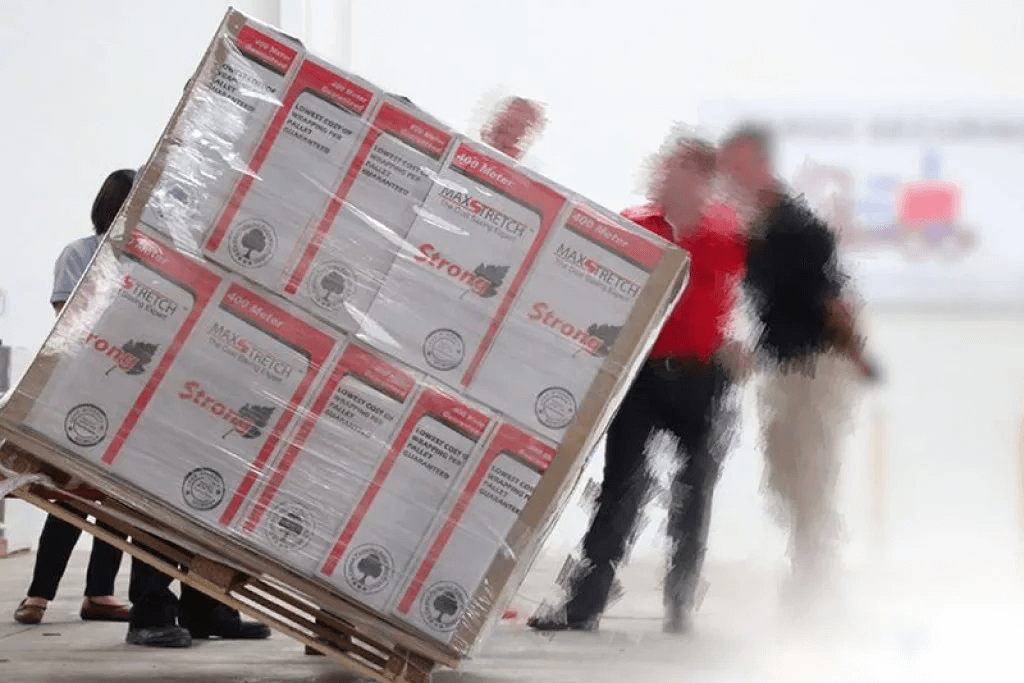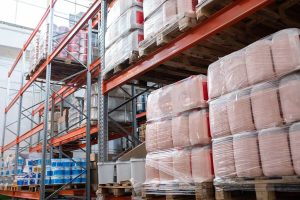
Shrink wrap packaging is a popular and versatile method used across various industries to protect products, enhance their presentation, and ensure they remain intact during transportation and storage. This packaging technique involves covering a product with a plastic film, which is then heated to shrink tightly around the item, creating a secure and tamper-evident seal.
Widely used for everything from food products to electronics and consumer goods, shrink wrapping offers numerous benefits, including cost-effectiveness, durability, and transparency. However, despite its advantages, shrink wrap packaging can encounter several issues that compromise its effectiveness. These problems can range from aesthetic concerns like wrinkles and burn holes to more serious issues such as poor seals and product damage.
In this article, we discuss the most frequent challenges faced in shrink wrap packaging and provide practical solutions to fix them so that your packaging process remains efficient and reliable.
Common Issues in Shrink Wrap Packaging
Despite its benefits, shrink wrap packaging can be prone to several issues. These problems can arise during the wrapping process or after the products have been packaged. Below are some of the most common issues associated with shrink wrapping:
1. Wrinkles and Creases in the Film
Wrinkles and creases can form on the shrink film during the packaging process, leading to an unprofessional appearance and potentially reducing the protective qualities of the packaging. This issue is often caused by using the wrong size of shrink film or incorrect machine settings.
Solution
Selecting the appropriate size of shrink film for the product is important. The film should be large enough to cover the product without excessive overlap, but not so large that it bunches up. Additionally, adjusting the heat settings on the shrink wrapping machine can help smooth out wrinkles and ensure a tight, clean wrap.
2. Product Damage During Shrink Wrapping
Shrink wrapping is used to protect products, but in some cases, it can cause damage if not done correctly. Overheating during the shrink process can warp or damage delicate products, while excessive tension in the film can crush or deform the items being packaged.
Solution
To avoid product damage, it is important to choose the right type of shrink film that offers the necessary protection without applying too much pressure. Adjusting the heat and tension settings on the shrink wrapping machine is also needed, especially when dealing with delicate items. Performing a test run before full-scale packaging can help identify potential issues and prevent product damage.
3. Inconsistent Film Thickness
Inconsistent film thickness can lead to weak spots in the shrink wrap, which makes the package more prone to tears and punctures. This issue often arises from using low-quality shrink film or from variations in the manufacturing process of the film itself.
Solution
Investing in high-quality shrink film can help ensure consistent thickness and durability. If inconsistent thickness persists, consider switching suppliers or requesting a different batch of film. Regular inspection of the film rolls before use can also help identify any issues early on.
4. Burn Holes in the Shrink Film
Burn holes are a common issue that occurs when the shrink film is exposed to excessive heat during the shrinking process. These holes not only compromise the appearance of the packaging but also reduce its protective capabilities.
Solution
To prevent burn holes, carefully monitor the heat settings on the shrink wrapping machine. It is essential to use the correct temperature for the type of shrink film being used. Regularly checking the heat elements for any signs of wear or malfunction can also help avoid this problem.
5. Poor Seal Quality
A poor seal is one of the most frequently encountered issues in shrink wrap packaging. If the seal is not strong enough, the shrink film can come apart, leaving the product exposed to external elements. This problem often occurs due to incorrect sealing temperatures or improper alignment of the sealing bar.
Solution
To ensure a strong seal, it is a must to set the sealing temperature correctly based on the type of shrink film used. Adjusting the sealing bar to ensure even pressure across the entire film can also help achieve a better seal. Regular maintenance of the sealing equipment is essential to prevent this issue.
6. Uneven Shrinkage of the Film
Uneven shrinkage is another issue that can occur during the packaging process. This happens when the film shrinks more in some areas than others, leading to an uneven and unsightly wrap. This issue is often due to inconsistent heat application or using the wrong type of shrink film for the product.
Solution
To achieve even shrinkage, ensure that the heat is distributed uniformly across the entire product. This may involve adjusting the positioning of the heat source or changing the conveyor speed in automated systems. Additionally, choosing a shrink film that matches the product’s shape and size can help reduce uneven shrinkage.
7. Dog-Ears on the Corners
Dog-ears are triangular flaps of film that appear at the corners of the package after the shrink wrapping process. These flaps not only detract from the appearance of the package but can also make it less secure.
Solution
To minimize dog-ears, use a shrink film that is appropriately sized for the product. Ensuring that the film is applied evenly and tightly before heat is applied can also reduce the formation of these flaps. Adjusting the sealing and shrinking temperatures may also help eliminate dog-ears.
Best Practices for Shrink Wrap Packaging
To minimize these common issues and ensure that shrink wrap packaging is effective and reliable, it is recommended to follow best practices throughout the packaging process.
1. Choose the Right Shrink Film
Selecting the correct shrink film for your product is important. Consider factors such as the size and shape of the product, the level of protection required, and the type of shrink wrapping equipment being used. Different types of shrink films, such as PVC, polyolefin, and polyethylene, offer varying levels of durability, clarity, and flexibility.
2. Monitor and Adjust Heat Settings
Heat settings play a critical role in shrink wrap packaging. Overheating can cause burn holes and product damage, while insufficient heat can result in poor seals and wrinkles. Continuously monitor and adjust the heat settings based on the type of shrink film and the specific needs of the product.
3. Conduct Regular Quality Checks
Regular quality checks throughout the shrink wrapping process can help identify issues early on. Inspect the seal quality, film appearance, and overall package integrity to ensure that the final product meets the desired standards. Implementing a quality control system can help maintain consistency and reduce the risk of packaging failures.
4. Regular Maintenance of Equipment
Regular maintenance of shrink wrapping equipment is necessary to prevent issues like poor seals, uneven shrinkage, and burn holes. Routine checks of the sealing bar, heat elements, and conveyor system can help identify and fix potential problems before they impact the packaging process.
5. Train Staff on Proper Techniques
Making sure that staff members are properly trained in shrink wrapping techniques is key to preventing common issues. Training should cover everything from selecting the right film and adjusting machine settings to performing routine maintenance and quality checks. Well-trained staff can significantly reduce the occurrence of shrink wrap problems and improve overall packaging efficiency.
All in All
Shrink wrap packaging is a highly effective method for protecting products and enhancing their presentation. However, common issues such as poor seals, wrinkles, burn holes, and uneven shrinkage can compromise the quality of the packaging.
Identifying these problems and implementing the appropriate solutions can help maintain the integrity and appearance of shrink-wrapped products. Upon following best practices and regularly inspecting equipment and film, businesses can ensure that their shrink wrap packaging remains reliable and effective.
FAQs about Shrink Wrap
Is shrink wrap film recyclable in Malaysia?
Yes, shrink wrap film is recyclable in Malaysia, but it depends on the type of plastic used. Most shrink wrap is made from polyethylene (PE), which is recyclable at specific recycling centers. However, recycling practices may vary, so it’s important to check with local facilities. Ensure the shrink wrap is clean and free from contaminants before recycling, as dirty or mixed materials can hinder the process. Some manufacturers also offer take-back programs for easier recycling of shrink wrap in commercial and industrial settings.
What are the common materials of shrink wrap?
The common materials used for shrink wrap include polyvinyl chloride (PVC), polyethylene (PE), and polyolefin. PVC shrink wrap is popular for retail packaging due to its clarity and affordability. Polyethylene, particularly low-density polyethylene (LDPE), is often used for heavier, industrial applications. Polyolefin is another widely used material, valued for its strength, flexibility, and food-safe properties, making it ideal for packaging food products and other sensitive items. Each material offers different benefits depending on the intended use.
What are the common features, thickness, colors, and widths of shrink wrap?
Shrink wrap is known for its ability to shrink tightly around objects when heat is applied, offering a secure and protective seal. It is transparent, allowing for clear visibility of the packaged items, though it is also available in other colors like white or black for privacy or branding purposes. The film is durable, resistant to punctures, and protects against moisture, dust, and tampering, making it ideal for both retail and industrial uses.
Shrink wrap typically comes in a variety of thicknesses, ranging from 12 to 100 microns, depending on the level of protection needed. Thinner films are generally used for lighter packaging, while thicker films are used for heavy-duty applications. The width of shrink wrap can vary, with common sizes ranging from 10 inches to 60 inches, accommodating a wide range of packaging needs, from small items to large pallets.
What is shrink wrap packaging and how does it work?
Shrink wrap packaging is a process where PVC, polyolefin, or polyethylene plastic film is wrapped around a product and then heated, causing the film to shrink tightly, providing protection, tamper-resistance, and secure bundling.
What is the difference between shrink wrap and vacuum packaging?
Shrink wrap involves wrapping plastic film around a product and heating it to shrink tightly around the item. In contrast, vacuum packaging removes air from the package before sealing, creating a tight fit around the product to preserve freshness and extend shelf life.
When should shrink packaging not be used?
Shrink packaging is not ideal for items sensitive to heat, such as certain electronics or perishable goods that could be damaged during the shrinking process. Additionally, products requiring airtight sealing for preservation are better suited for vacuum packaging.





